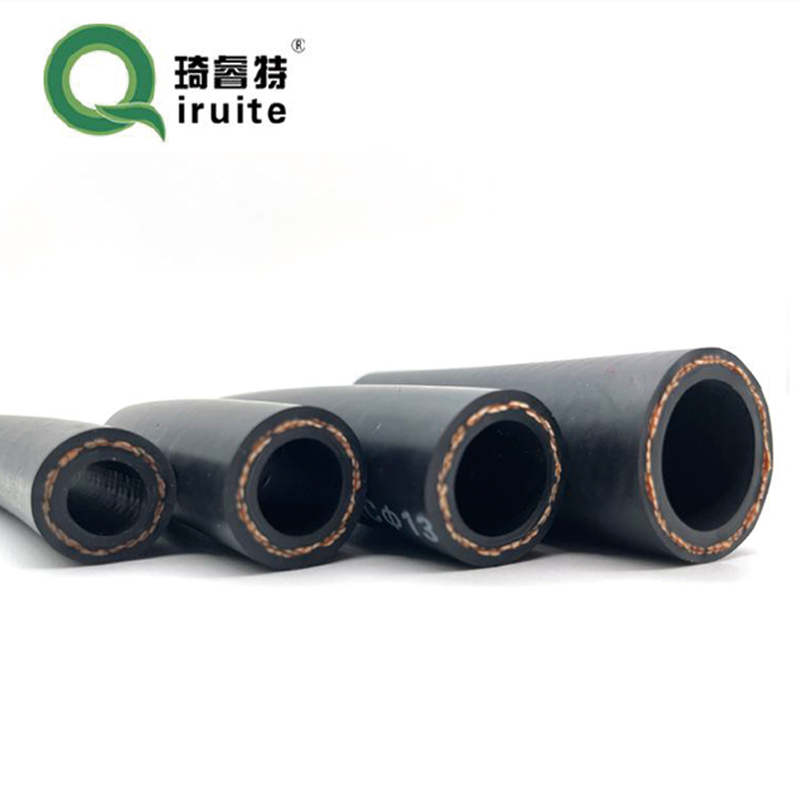Effective Solutions for Repairing Power Steering Hose Leaks in Your Vehicle
Fixing Power Steering Hose Leaks A Comprehensive Guide
Power steering systems are essential for modern vehicles, providing drivers with the ease of maneuvering their cars. One critical component of this system is the power steering hose, which transports hydraulic fluid between the power steering pump and the steering gear. Over time, these hoses can develop leaks, leading to a range of issues, from reduced steering capability to complete steering failure. In this article, we will explore the causes of power steering hose leaks, signs to look out for, and a step-by-step guide on how to fix the leak.
Understanding Power Steering Hose Leaks
Power steering hoses are typically made from rubber or reinforced synthetic materials. They are designed to handle high pressure, but factors such as age, temperature fluctuations, and severe driving conditions can wear them down. Common causes of leaks include
1. Wear and Tear Over time, materials can degrade due to heat and exposure to fluids. 2. Corrosion Metal fittings can rust and deteriorate, especially if the fluid becomes contaminated. 3. Improper Installation If the hose is not installed correctly, it can rub against other components or be under excessive stress, leading to failure. 4. Impact Damage Driving over bumps or potholes can cause hoses to kink or rupture.
Signs of a Power Steering Hose Leak
Identifying a power steering hose leak early can save you from more serious problems down the line. Keep an eye out for the following symptoms
- Fluid Puddles Look for reddish-brown or clear fluid leaking from your vehicle, particularly under the area where the power steering components are located. - Steering Difficulty If you feel increasing resistance while turning the steering wheel, this could indicate a drop in fluid levels due to a leak. - Noisy Steering Whining or groaning noises when you turn the wheel can signal low fluid, often caused by a leaky hose. - Burning Smell If the power steering fluid leaks onto hot engine components, it can produce a burning odor.
Fixing a Power Steering Hose Leak
Once you’ve diagnosed a power steering hose leak, it’s time to take action. While some leaks may be repaired temporarily, replacing the damaged hose is often the best long-term solution. Here’s how you can fix the issue
Tools and Materials Needed
- New power steering hose - Wrench set - Screwdrivers - Bucket or pan (to catch fluid) - Power steering fluid - Hose clamps (if necessary)
power steering hose leak fix

Step-by-Step Guide
1. Safety First Make sure your vehicle is parked on a level surface, and engage the parking brake. Allow the engine to cool before working on the power steering system.
2. Locate the Leak Inspect the power steering system, looking closely at the hoses, fittings, and reservoir for signs of fluid.
3. Drain the Fluid Place a bucket under the power steering pump. Carefully loosen the hose fittings with a wrench, allowing the fluid to drain into the bucket.
4. Remove the Damaged Hose Using a wrench, disconnect the hose from both the pump and the steering gear. If necessary, use a screwdriver to remove any clamps holding the hose in place.
5. Install the New Hose Connect the new power steering hose to the pump and the steering gear, ensuring a snug fit. If using clamps, make sure they are tight but not overly constricted.
6. Refill Power Steering Fluid Refill the power steering reservoir with the appropriate fluid. Check your owner’s manual for specifications regarding the type of fluid required.
7. Test the System Start the vehicle and turn the steering wheel from lock to lock a few times to help circulate the fluid. Check for any leaks at the connection points.
8. Dispose of Old Fluid Properly Make sure to dispose of the old power steering fluid and any other materials responsibly. Many auto parts stores accept used fluids for recycling.
Conclusion
Dealing with a power steering hose leak can be daunting, but with the right tools and knowledge, it’s a task you can accomplish yourself. Regular maintenance and inspections of your vehicle’s power steering system can prevent leaks and ensure smooth operation. If you’re ever unsure about the repair process, don’t hesitate to consult a professional mechanic. Keeping your steering system in top shape will enhance your driving experience and ensure your vehicle operates safely.
-
Ultimate Spiral Protection for Hoses & CablesNewsJun.26,2025
-
The Ultimate Quick-Connect Solutions for Every NeedNewsJun.26,2025
-
SAE J1401 Brake Hose: Reliable Choice for Safe BrakingNewsJun.26,2025
-
Reliable J2064 A/C Hoses for Real-World Cooling NeedsNewsJun.26,2025
-
Heavy-Duty Sewer Jetting Hoses Built to LastNewsJun.26,2025
-
Fix Power Steering Tube Leaks Fast – Durable & Affordable SolutionNewsJun.26,2025

